India is one of the world largest sugarcane producers, and its cultivation plays a vital role in its agricultural economy. For beginners looking to boost their profits through sugarcane farming, the key lies in choosing the right varieties. This blog will explore high-yielding sugarcane hybrid cultivars that can transform your agricultural endeavors.
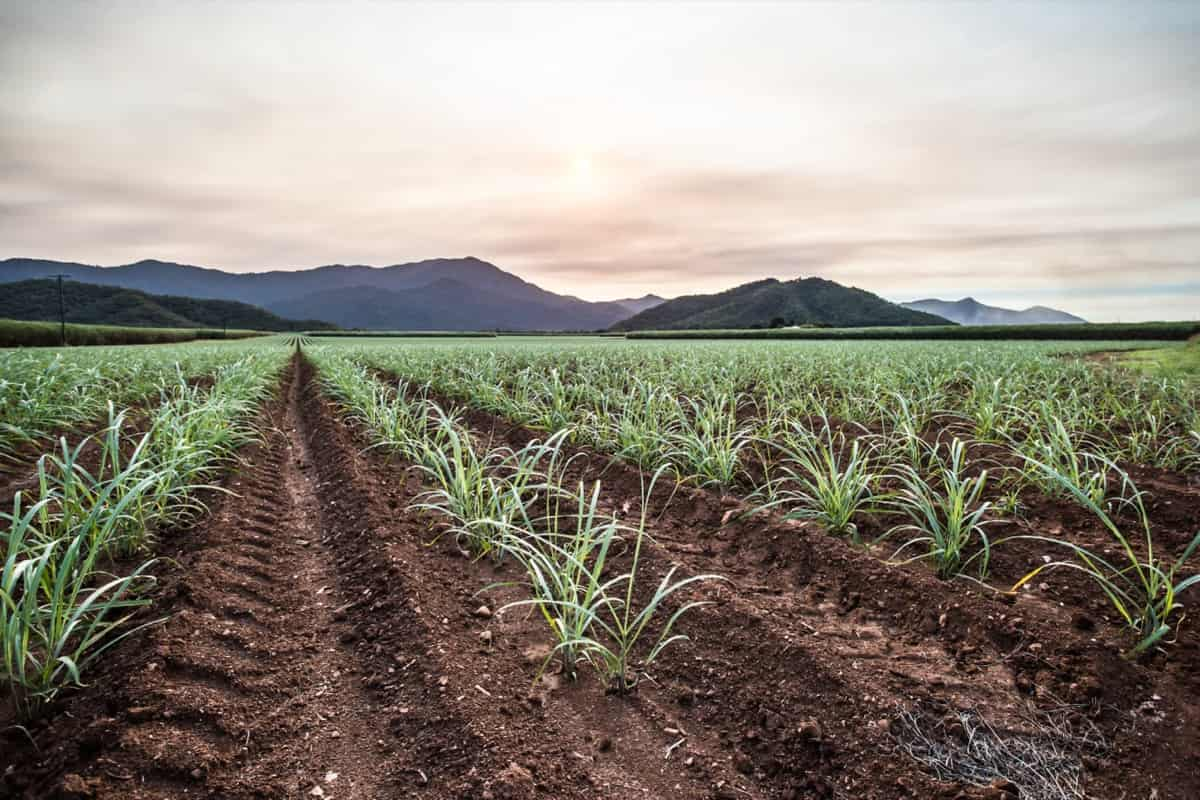
These varieties have a history of producing impressive results and have support from scientific research. By the end of this blog, you’ll clearly understand which sugarcane hybrids to consider, setting you on a path to increased profits in your farming venture.
Need of Sugarcane Varieties in India
Sugarcane varieties are crucial in commercially producing sugar, a vital industry in India. Sugarcane is the raw material for most sugar production. In India, this industry provides jobs to millions and contributes significantly to the nation’s economy. India is the second-largest producer of sugarcane globally, with over 360 million tons produced annually. This abundance of sugarcane varieties fuels the sugar industry, which, in turn, supplies not only sugar but also raw materials for various food and beverage products.
We are the world’s second-largest sugar producer but consume the most sugar. A whopping 4 lakh acres of land in India is dedicated to sugarcane farming. That is like having 300,000 football fields covered in sugarcane! However, what is even more incredible is that over 2.8 lakh farmers are involved in growing this sweet crop. It is not just them; the sugar industry directly or indirectly supports around 11 crore people in our country.
Sugarcane Varieties Recommended for Commercial Cultivation in Different States
Uttar Pradesh
- Early ripening: CoS 687, CoS 8436, CoS 88230, CoS 95435, CoSe 91232
- Mid-season and late ripening: Co 1148, CoS 767, BO 91
Bihar
- Early ripening: BO 90, BO 99, BO 102, BO 120
- Mid-season and late ripening: BO 104, CoS 767, BO 109, BO 89, BO 91, BO 106, BO 108, Co 1148
West Bengal
- Early ripening: BO 90
- Mid-season and late ripening: Co 1148, Co 7224
Orissa
- Early ripening: Co 7508, Co 7704, Co 62175, Co 740
- Mid-season and late ripening: Co 7219, CoJ 8201, Co 975, Co 7706, Co 8402, Co 62175
Assam
- Early ripening: Co 1108
There are states like Punjab, Haryana, Rajasthan, Madhya Pradesh, Gujarat, Maharashtra, Karnataka, Andhra Pradesh, and Tamil Nadu, each with its recommended sugarcane varieties for both early ripening and mid-to-late ripening.
Salient Characteristics of Sugarcane Varieties Released in India
Several sugarcane varieties have been released in India with unique characteristics. These include varieties like Co 8371 (Bhima), Co 85004 (Prabha), Co 86032 (Nayana), Co 86249 (Bhavani), and many more. These varieties vary in planting season, cane yield, sucrose content, and specific traits like disease resistance, drought tolerance, and ratooning ability.
In case you missed it: Weed Management in Sugarcane Farming: How to Control with Organic, Chemical and Cultural Practices
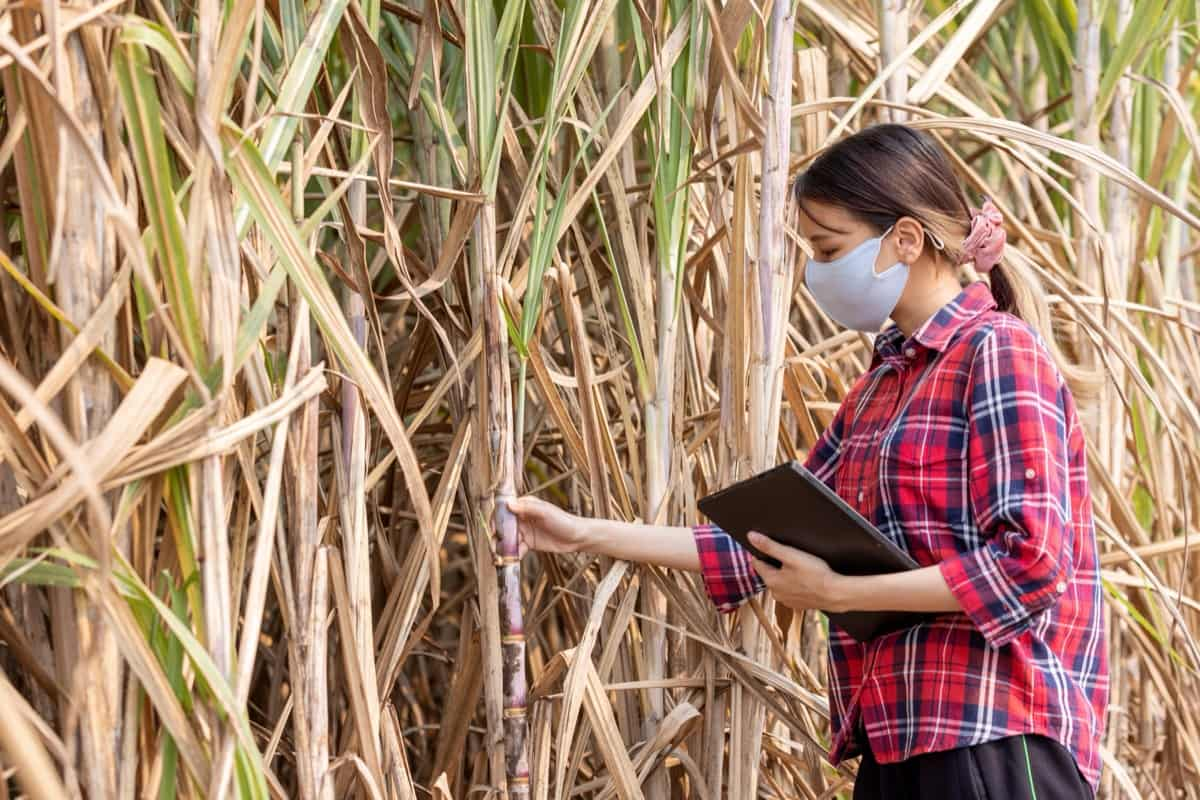
Choosing the right variety based on your region and farming conditions is essential for maximizing sugarcane yields and profitability. These recommended varieties have been carefully selected to suit the diverse climates and needs of sugarcane growers across India.
Sugarcane Varieties and Disease Resistance
CoPb 95 (CoPb 16211)
- Disease Resistance: Field resistance to red rot disease, moderate resistance to smut, lower susceptibility to top borer.
- Characteristic: This variety is desirable for its 17% sucrose content, making it ideal for sugar production.
CoPb 96 (CoPb 14181)
- Disease Resistance: Tolerance to red rot disease pathotypes.
- Characteristic: Known for its 16-17% sucrose content in November, which increases to 18% in December.
Co 15023 (Adhoc)
- Disease Resistance: Resistance to prevalent red rot disease pathotypes.
- Characteristic: Offers a 16-17% sucrose content in November, rising to 18% in December.
CoPb 98 (CoPb 14185)
- Disease Resistance: Tolerance to red rot disease pathotypes.
- Characteristic: Provides 17% sucrose in January, increasing to 19% in March.
Common Diseases in Sugarcane
- Red Rot: Red rot is a significant concern in sugarcane cultivation. If not properly managed, it is a result of the fungus Colletotrichum falcatum and can cause yield losses.
- Smut: Smut is another fungal disease that affects sugarcane. It results in the formation of black whip-like structures on the stalks and affects the overall health of the crop.
- Top Borer: Top borer is an insect pest that can cause significant damage by boring into the top of the sugarcane stalk, leading to yield reduction.
- Leaf Scald: This disease is caused by the bacterium Xanthomonas axonopodis and results in the appearance of long, water-soaked lesions on leaves, impacting photosynthesis.
- Ratoon Stunting Disease: This viral disease affects ratoon crops, leading to stunted cane growth and reduced yields.
In case you missed it: Pest and Disease Management in Sugarcane: Causes, Symptoms, Chemical, and Biological Control
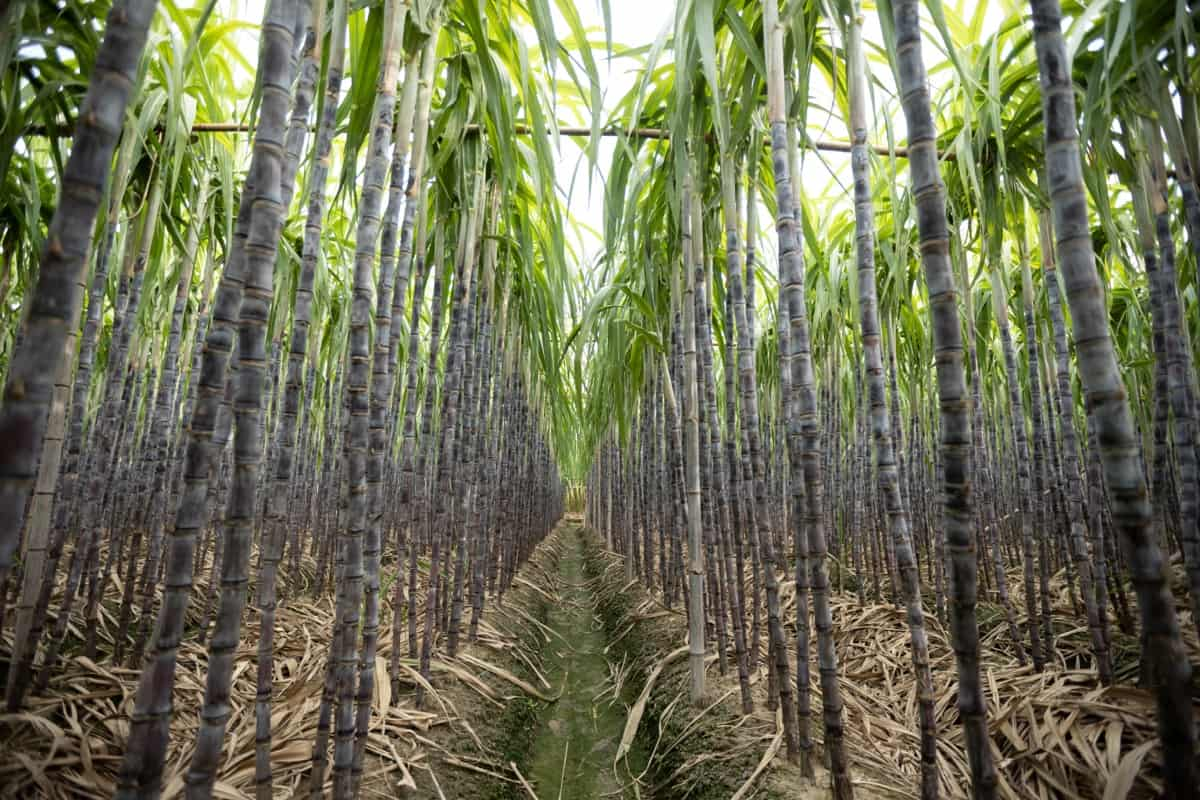
Punjab Agriculture University Recommends New Sugarcane Varieties for Farmers
Early Varieties
CoPb 95 (CoPb 16211): This early variety stands out with its tall canes, thick stalks, and distinctive zigzag internode alignment. The canes are purplish-green, and they boast a broad leaf canopy. What makes this variety particularly appealing is its juice, which contains 17% sucrose, making it highly desirable for sugar production.
It exhibits field resistance to red rot disease, moderate resistance to smut, and lower susceptibility to top borer. Additionally, it is known for its ratooning ability, which means it can regrow after harvest. It also has a commendable frost tolerance. The average cane yield for CoPb 95 is about 425 quintals per acre.
CoPb 96 (CoPb 14181): This variety features medium-thick canes with a cylindrical shape and yellowish-green color. Its juice contains 16-17% sucrose in November, which increases to 18% in December. CoPb 96 is another good ratooner, providing additional harvests. It exhibits tolerance to red rot disease pathotypes and offers high-quality gur production. On average, it yields about 382 quintals of cane per acre.
Co 15023 (Adhoc): Co 15023, another early variety, features medium-thick canes with a yellowish-green hue. Its juice contains 16-17% sucrose in November, rising to 18% in December. It, too, demonstrates resistance to prevalent red rot disease pathotypes. The average yield of this variety is around 310 quintals per acre.
Midlate Variety
CoPb 98 (CoPb 14185): This midlate variety showcases tall canes, thick stalks, and yellowish-green color. Its juice contains 17% sucrose in January, increasing to 19% in March. Like its counterparts, it is an excellent ratooner with tolerance to red rot disease pathotypes. On average, CoPb 98 yields about 400 quintals of cane per acre. These recommended sugarcane varieties from PAU are best suits to cater to the specific needs of Punjab’s sugarcane farmers. They offer robust yields, resistance to common diseases, and various characteristics that make them well-suited for local conditions.
In case you missed it: Sugarcane Farming in the USA: How to Start, Production States, Ideas, and Tips
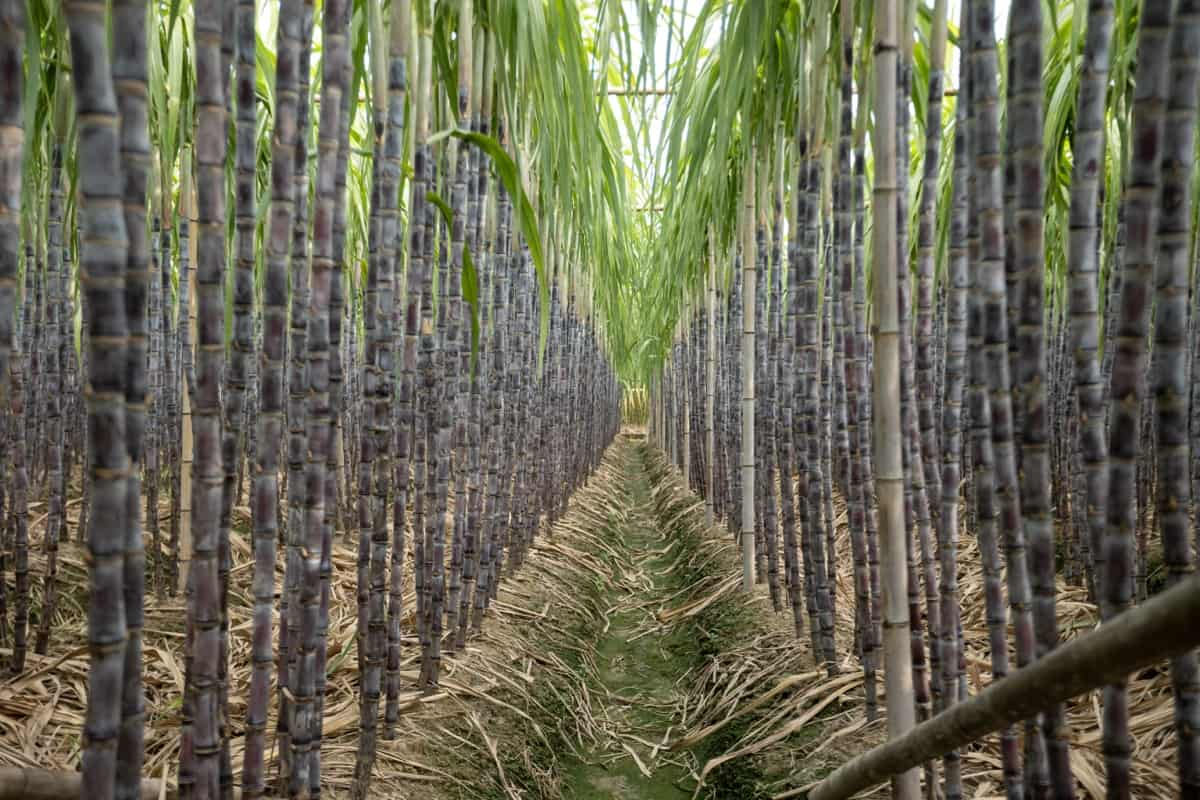
High-Yielding and Disease-Resistant Sugarcane Varieties in India
Sugarcane plays a major role in India, the world’s largest consumer and second-largest sugar producer. With approximately 4 lakh acres of land dedicated to sugarcane cultivation and over 2.8 lakh farmers engaged in this endeavor, more than 11 crore people are directly or indirectly reliant on the country’s sugar industry.
However, sugarcane is highly susceptible to various diseases and pests, posing significant challenges for farmers. Scientists at Govind Ballabh Pant University of Agriculture & Technology in Pantnagar have recently introduced three sugarcane varieties with exceptional disease and pest resistance to address this issue. These varieties offer the promise of improved yields and reduced losses for farmers.
Co Pant 12221: Early Maturing Sugarcane
Evaluation by agricultural scientists has shown that Co Pant 12221 has the potential to provide farmers with robust yields and superior juice quality. This variety is a win-win for both farmers and the sugar industry.
Co Pant 12226: Normal Sugarcane
Co Pant 12226 stands out for its disease resistance and excellent production capacity. It matures early, making it well-suited for commercial cultivation. Notably, it thrives even in waterlogged and drought-prone conditions, making it a valuable choice for diverse agricultural settings.
Co Pant 13224
This variety offers the dual advantage of being cost-effective and disease-free. It is recognized for its high production potential and is expected to be a boon for farmers aiming for better yields.
Popular Promising Varieties of Sugarcane: Hybrid Cultivars for Increases Profits
The development of sugarcane varieties has been a significant research focus, particularly in India, where sugarcane holds great economic importance. In the early 20th century, pioneering work led to Co 205, a hybrid between cultivated sugarcane (Saccharum officinarum) and the wild grass S. spontaneum, which gained popularity in Punjab. This marked the beginning of a journey to revolutionize the sugar industry.
Over the decades, several successful varieties have been introduced to different regions of India. In the sub-tropical zone, varieties like Co 205, Co 213, Co 281, and Co 290 became popular during the 1920s and onwards. The more recent Co 86032 has become a prominent choice in tropical India.
Co 99004 (Damodar) is gaining attention in the Peninsular zone due to its field habits and suitability for mechanical harvesting. Co 2001-13 and Co 2001-15 are midlate maturing varieties, performing well compared to the widely used Co 86032.
In case you missed it: Top 24 Steps to Boost Sugarcane Yield: How to Increase Production, Size, and Quality
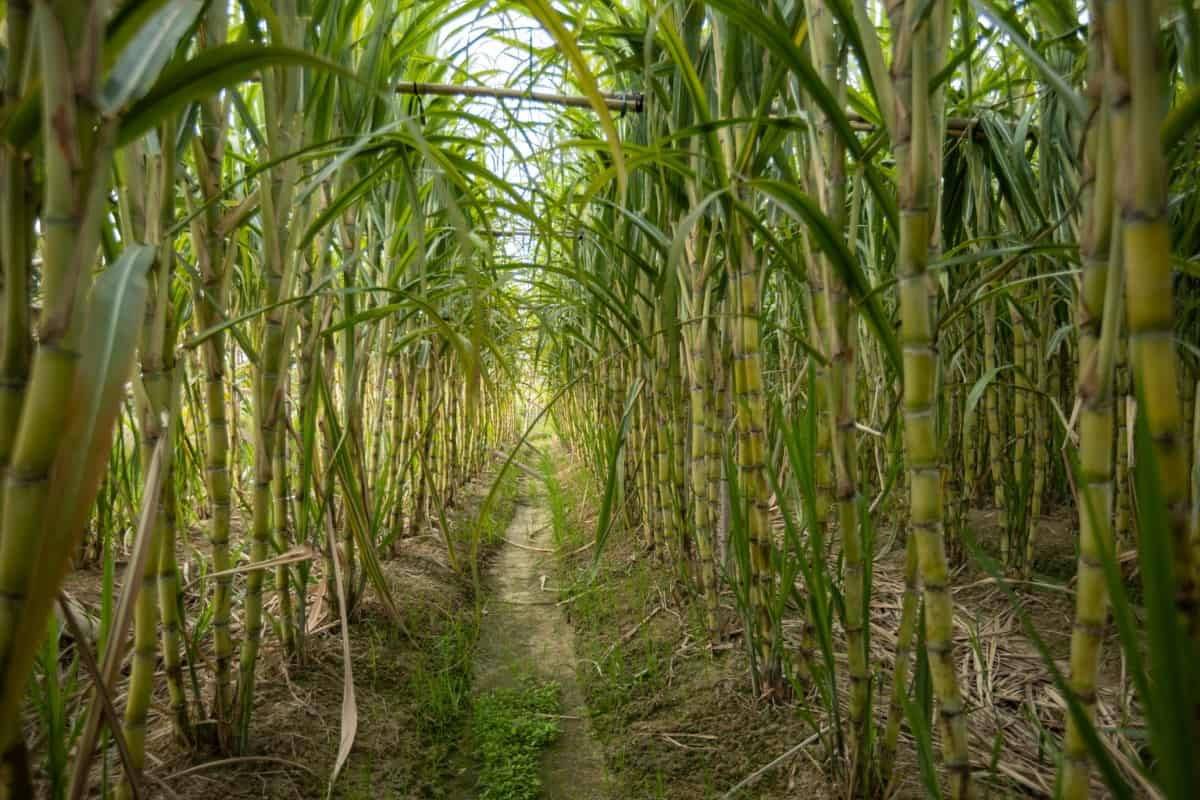
North-West India has seen the introduction of Co 0238, an early maturing variety with resistance to red rot and good cane and sugar yield performance. Co 0118, another early maturing variety, is also making strides in this region.
In North East and North Central India, Co 0232 and Co 0233 thrive due to their tolerance to waterlogging, red rot resistance, and high yields.
In the pipeline, there are promising varieties like Co 0314 and Co 0209, both early maturing and offering resistance to red rot and smut, contributing to the diversity of choices for farmers. These varieties have transformed the sugarcane landscape in India and made their mark in the global sugar industry, with their use in breeding programs in 26 other countries.
Best Practices for High-Yielding Sugarcane Varieties in India
Climate and Soils: Sugarcane thrives in hot, sunny, and tropical regions. Sugarcane requires a long, warm growing season with ample solar radiation and sufficient soil moisture. Areas with high rainfall or good irrigation facilities are ideal for sugarcane. While sugarcane can grow in various soil types, well-drained, deep, loamy soil is considered best for cultivation.
Land Preparation: Proper land preparation is essential. The soil should be plowed using different tractor-drawn implements to achieve optimal soil tilth and create ridges and furrows.
Seed Rate and Spacing: For paired-row planting, 24,000 (2-budded setts) or 16,000 (3-budded setts) plants are required per acre. Row spacing varies from 90-120 cm based on soil texture.
Intercultural Operations: Regular intercultural operations are necessary to stir the furrow soil and control weed growth. Partial hilling up of soil against crop rows is done when the cane starts rapid growth at 3-4 months of age. Older leaves are removed to prevent insect pests, and the cane plants are tied to prevent lodging.
In case you missed it: Best Fertilizer for Sugarcane: Organic, Biofertilizers, NPK, Compost Manure, and Schedule
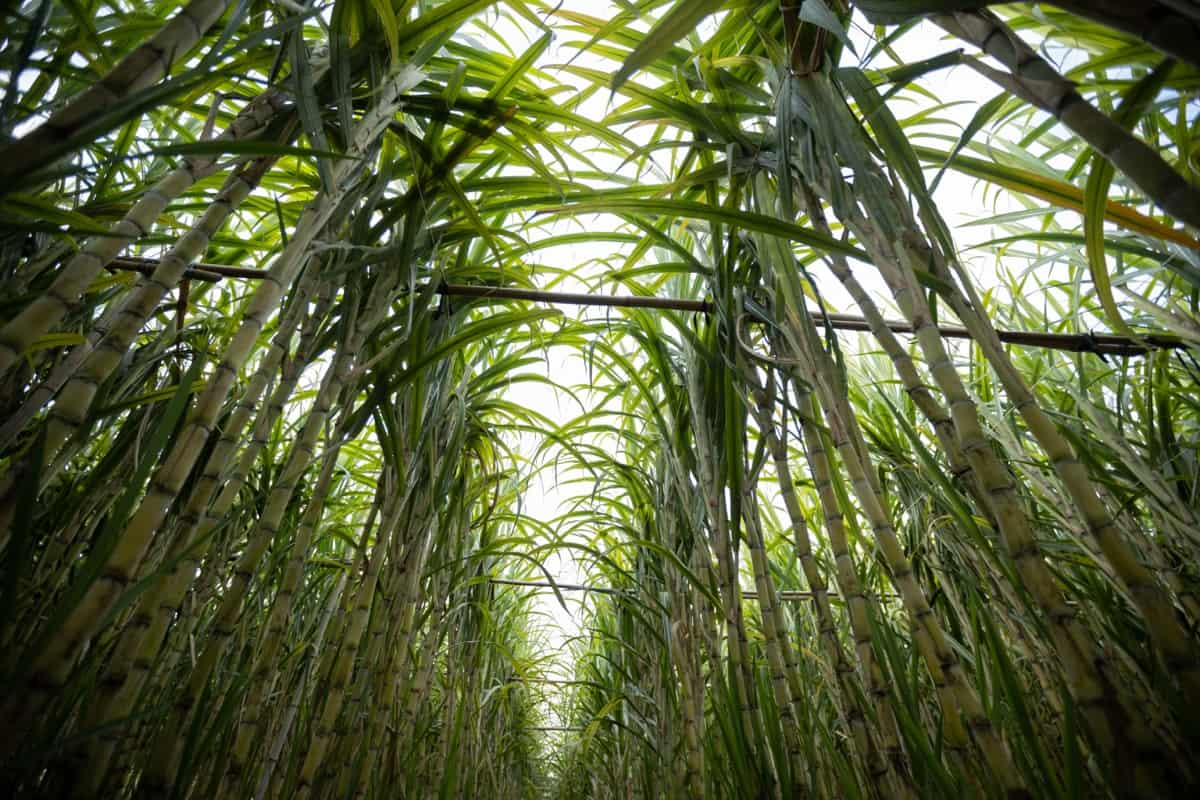
Crop Nutrition Management: Sugarcane requires precise nutrient management. Nutrient deficiencies of N, P, K, S, Mg, Fe, Zinc, and Boron are common. Applying the right fertilizers at the right time is crucial for better growth and higher yields.
Irrigation Management: Sugarcane needs regular irrigation, with shallow wetting in the initial stage and longer intervals during later growth phases. Drip irrigation with fertilizer nutrient solutions (fertigation) efficiently meets water and nutritional requirements.
Weed Management: Weeds can be problematic in sugarcane fields. Regular intercultural operations, herbicide application, and mulching can help control weeds.
Insect Pest Management: Early shoot borers, white grubs, and sugarcane wholly aphids are just a few insect pests that can harm sugarcane. Management includes using resistant varieties, intercropping, and chemical control when necessary.
Plant Diseases and Management: Sugarcane is susceptible to diseases like red rot, smut, and wilt. Disease management involves dipping seed sets in specific solutions, uprooting and destroying infected plants, and sowing resistant varieties.
Harvesting and Post-Harvest Measures: Harvesting should be done at the right maturity stage, which varies for early and mid-season varieties. The cane should be cut to ground level for plant and ratoon crops.
In case you missed it: 15 Best CCTV Cameras for Farm Security in India: Price, and Wireless for Agriculture Surveillance
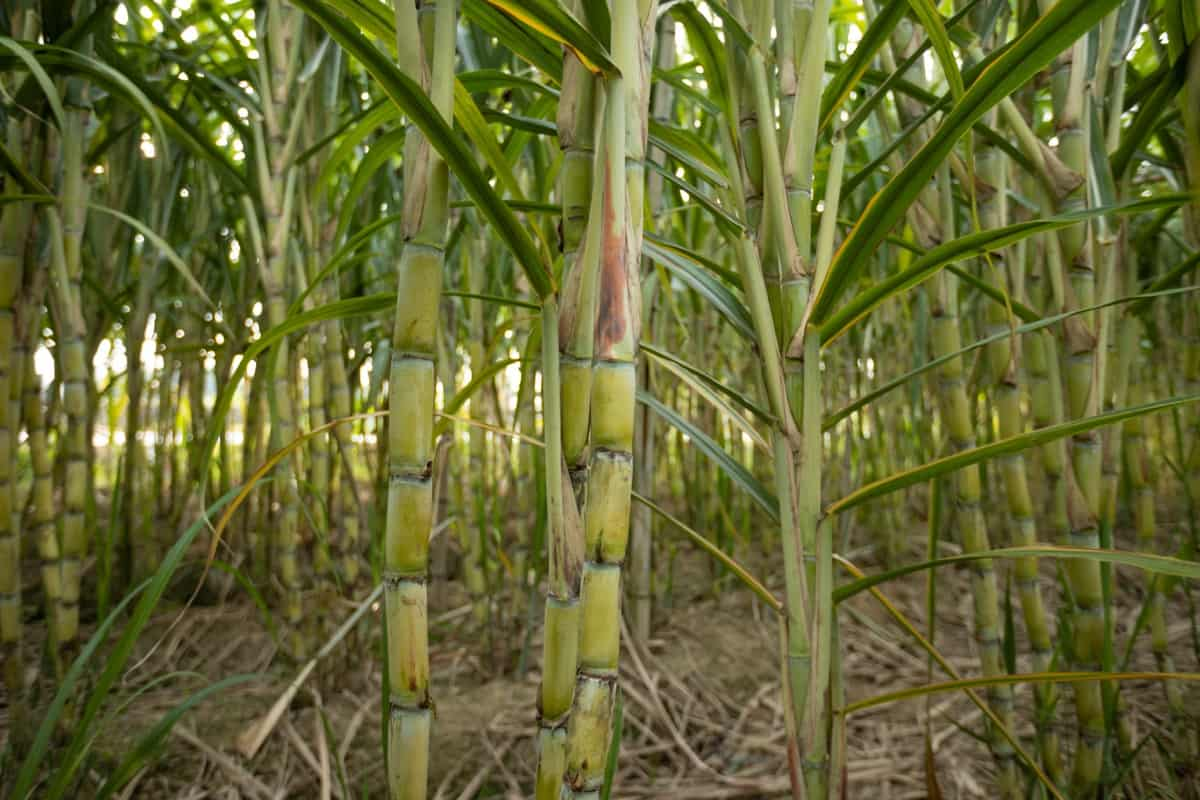
Conclusion
High-yielding sugarcane varieties in India, including hybrid cultivars, are for increasing profits and sustaining the nation’s sugar industry. These varieties resist diseases, high yields, and improved sugar content, contributing significantly to the economic well-being of sugarcane farmers.
- How to Build a Low-budget Goat Shed: Cheap Ideas and Tips
- Goat Farming Training Programs in India: A Beginner’s Guide
- Types of Pesticides Used in Agriculture: A Beginner’s Guide
- Economical Aquaculture: A Guide to Low-Budget Fish Farming
- 15 Common Planting Errors That Can Doom Your Fruit Trees
- How to Make Houseplants Bushy: Effective Tips and Ideas
- Innovative Strategies for Boosting Coconut Pollination and Yield
- Pollination Strategies for Maximum Pumpkin Yield
- The Complete Guide to Chicken Fattening: Strategies for Maximum Growth
- Natural Solutions for Tulip Problems: 100% Effective Remedies for Leaf and Bulb-Related Issues
- Revolutionizing Citrus Preservation: Towards a Healthier, Greener Future
- Natural Solutions for Peony Leaf and Flower Problems: 100% Effective Remedies
- Maximizing Profits with Avocado Contract Farming in India: A Comprehensive Guide
- Natural Solutions for Hydrangea Problems: 100% Effective Remedies for Leaf and Flowers
- The Ultimate Guide to Choosing the Perfect Foliage Friend: Bringing Life Indoors
- From Sunlight to Sustainability: 15 Ways to Use Solar Technology in Agriculture
- The Ultimate Guide to Dong Tao Chicken: Exploring from History to Raising
- The Eco-Friendly Makeover: How to Convert Your Unused Swimming Pool into a Fish Pond
- Mastering the Art of Delaware Chicken Farming: Essentials for Healthy Backyard Flocks
- 20 Best Homemade Fertilizers for Money Plant: DIY Recipes and Application Methods
- How to Craft a Comprehensive Free-Range Chicken Farming Business Plan
- Brighten Your Flock: Raising Easter Egger Chickens for Beauty and Bounty
- How to Optimize Your Poultry Egg Farm Business Plan with These Strategies
- Subsidy for Spirulina Cultivation: How Indian Government Schemes Encouraging Spirulina Farmers
- Ultimate Guide to Raising Dominique Chickens: Breeding, Feeding, Egg-Production, and Care
- Mastering the Art of Raising Jersey Giant Chickens: Care, Feeding, and More
- Ultimate Guide to Raising Legbar Chickens: Breeding, Farming Practices, Diet, Egg-Production
- How to Raise Welsummer Chickens: A Comprehensive Guide for Beginners
- How to Protect Indoor Plants in Winter: A Comprehensive Guide
- Ultimate Guide to Grow Bag Gardening: Tips, Tricks, and Planting Ideas for Urban Gardeners
- Guide to Lotus Cultivation: How to Propagate, Plant, Grow, Care, Cost, and Profit
- Agriculture Drone Subsidy Scheme: Government Kisan Subsidy, License, and How to Apply Online
- Ultimate Guide to Raising Araucana Chickens: Breed Profile, Farming Economics, Diet, and Care
- Bringing Hydroponics to Classroom: Importance, Benefits of Learning for School Students
- Ultimate Guide to Raising Polish Chickens: Breed Profile, Farming Economics, Diet, and Care
- Ultimate Guide to Raising Australorp Chickens: Profile, Farming Economics, Egg Production, Diet, and Care